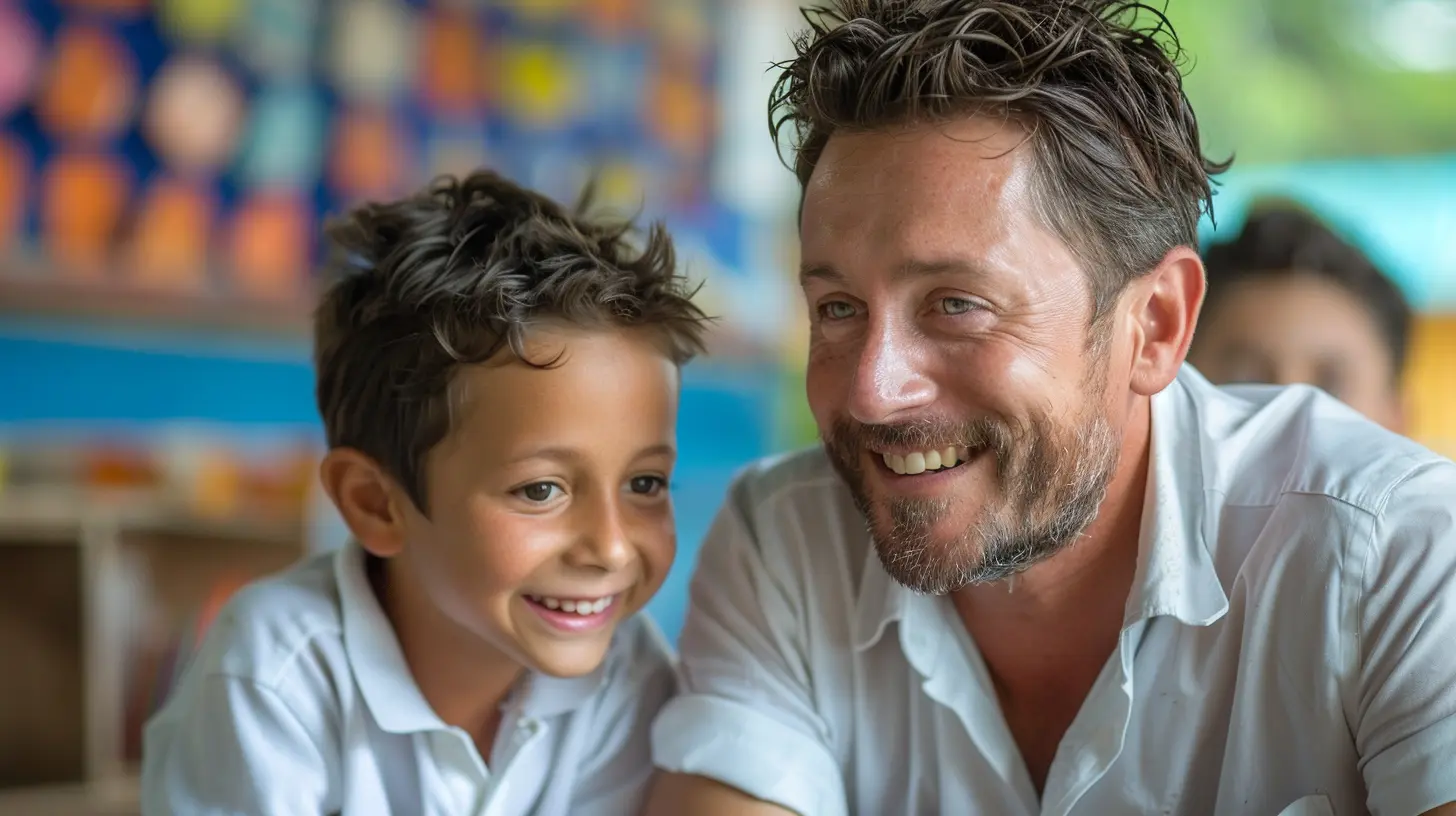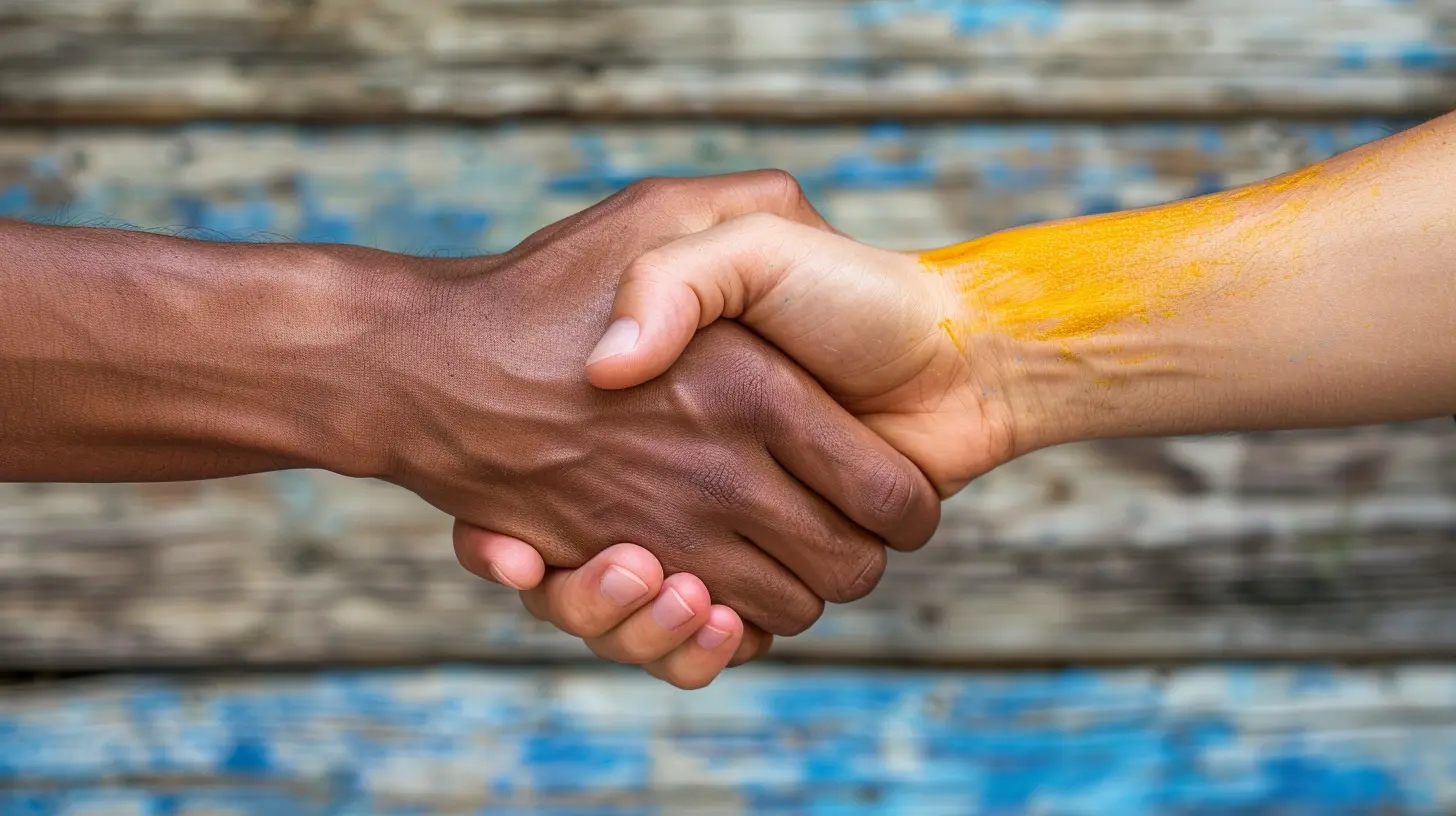Building a Positive Teacher-Student Relationship for Academic Success
2 September 2025
In every classroom, there's an invisible thread that connects teachers and students. Some may call it "rapport," others may refer to it as "connection" or "mutual respect." But at its core, it's a relationship—one that can either fuel a student’s academic journey or hold them back.
Let’s be real for a second. Remember your favorite teacher from school? What made them stand out? Was it their teaching style, or was it the way they made you feel like you mattered? Odds are, it was the latter. That, right there, is the magic sauce: a positive teacher-student relationship.
In this guide, we’re diving deep into why and how building strong teacher-student relationships can boost academic success, increase classroom engagement, and foster a lifelong love for learning.
Why Positive Teacher-Student Relationships Matter
Let’s address the obvious first—humans are social creatures. We thrive on connection. And kids? Even more so. They crave acceptance, encouragement, and belonging. When students feel a genuine bond with their teacher, the entire learning experience changes.Emotional Safety = Academic Risk-Taking
Students are more likely to step outside their comfort zones when they feel safe. That safety isn't just about physical boundaries but emotional ones too.Think about this: Would you raise your hand in a room full of strangers or in front of someone who constantly shuts you down? Probably not. But if you’re around someone who celebrates your efforts and encourages your voice, the fear melts away.
Building that kind of trust lays a foundation for curiosity, creativity, and academic risk-taking.
Motivation Goes Through the Roof
Ever noticed how students put in more effort for teachers they genuinely like? That’s no coincidence. When there's mutual respect, students naturally want to show up, do the work, and push themselves. It's not just about earning grades—it's about not letting someone down who believes in them.
The Science Behind the Connection
Research backs this up. Studies have repeatedly shown that students with strong teacher relationships:- Score higher on achievement tests
- Exhibit better attendance
- Show improved behavior
- Are more engaged in class
- Feel more motivated to learn
One key study published in the journal Child Development found that students with close, supportive relationships with their teachers tend to perform better academically and develop stronger social-emotional skills.
Bottom line? The connection isn’t fluff—it’s foundational.
The Pillars of a Strong Teacher-Student Relationship
Let’s break down what it takes to build a truly positive, enduring teacher-student relationship. Spoiler: It’s not just about being “nice.”1. Trust
You can’t teach effectively without trust. Period. Trust is the glue that holds any relationship together, and it’s no different in the classroom.How do you build it?
- Follow through on promises – if you say you're going to do something, do it.
- Be consistent – students need to know what to expect from you.
- Be honest – even if it means admitting when you're wrong.
2. Respect
Respect must flow both ways. It’s not about asserting authority; it’s about showing students you value them as individuals.Respect shows up in small ways:
- Listening when they speak
- Avoiding sarcasm or public shaming
- Using their names
- Acknowledging their efforts—even when the result isn’t perfect
3. Empathy
Put yourself in their shoes. Every student carries a backpack full of unique experiences, struggles, and emotions. A teacher who sees beyond the grades and behaviors can transform a student’s life.Ask yourself:
- Is this student acting out because they’re defiant or because something deeper is going on?
- Can I respond with compassion instead of punishment?
4. Communication
Great relationships are built on open, honest, and frequent communication. That means both talking and listening.Tip: Try check-ins. A quick “How are you doing today?” at the beginning of class goes a long way. It signals that you care—really care.
Practical Ways Teachers Can Build Strong Relationships
Now that we’ve talked about the why, let’s tackle the how. Building relationships doesn’t always come naturally, especially in classrooms packed with different personalities. But here are some practical, actionable strategies you can start using today.Greet Students by Name
Sounds simple, right? But it’s powerful. Saying a student’s name as they walk in creates an instant personal connection. It shows that they’re seen and valued.Learn About Their Lives
You don’t have to pry, but showing interest in their hobbies, cultures, or even favorite shows can create common ground. These little tidbits help you connect—and can even guide your lesson plans.Imagine referencing a student's favorite video game in a math problem. Watch their face light up.
Be Available
You don't have to be on call 24/7, but making time for students—whether through office hours, quick after-class chats, or just being present—signals that you're approachable and interested in their success.Provide Constructive Feedback
Feedback shouldn't feel like an attack. It should guide and inspire.Try the “compliment sandwich” approach:
1. Start with what they did well
2. Gently provide areas for improvement
3. End with encouragement
Celebrate Small Wins
Did a student who struggles with reading finally finish a chapter book? Celebrate it. Did someone who rarely speaks up answer a tough question? Acknowledge it.Small victories add up to big confidence.
How Students Benefit from Positive Teacher Connections
Let’s flip the coin. What does this look like from a student’s perspective?Increased Engagement
Students connected to their teachers are more likely to show up—physically and mentally. They pay more attention. They participate more often. Why? Because they feel like they belong.Better Academic Performance
This isn't just about grades. It’s about understanding the material, building long-term critical thinking skills, and developing a love for learning. When students enjoy learning, retention skyrockets.Improved Behavior
Many classroom management issues stem from a lack of connection. When students feel cared for, they’re more likely to follow rules, show respect, and engage positively.Emotional Development
Students learn more than math or science in class—they learn how to communicate, cope, and collaborate. A positive relationship with a teacher supports emotional intelligence and resilience.Challenges Teachers Face—and How to Overcome Them
Let’s not sugarcoat it: building relationships with every student is tough. Between lesson planning, meetings, grading, and managing diverse learners, time is tight. And sometimes, personalities clash.Here’s how to navigate those bumps:
Difficult Students
Start with empathy. Often, the students who act out the most are the ones who need connection the most. Focus on relationship before discipline.Large Class Sizes
Prioritize. You might not forge deep bonds with every student, but showing basic interest, respect, and kindness to all can still create a positive environment.Burnout
Take care of yourself. You can’t pour from an empty cup. Set boundaries, seek support, and give yourself grace.How Schools Can Support Positive Relationships
It can’t all fall on teachers. Schools play a critical role in promoting and supporting relationship-building.Smaller Class Sizes
Easier said than done, but smaller classes mean more face time and connection opportunities.Professional Development
Trainings on communication, empathy, and trauma-informed practices give teachers tools to connect better.A Positive School Culture
When the whole school fosters positivity, support, and inclusiveness, everyone benefits—from administrators to students.Final Thoughts: It’s the Little Things
At the end of the day, building a positive teacher-student relationship isn’t about grand gestures. It’s about consistency, compassion, and being present. It’s about showing up—not just physically, but emotionally.When students know their teacher is in their corner, the possibilities are endless. They take risks. They ask questions. They grow beyond the curriculum.
And isn’t that what education is really about?
all images in this post were generated using AI tools
Category:
Teacher TrainingAuthor:

Anita Harmon
Discussion
rate this article
1 comments
Ramona McLoughlin
Teachers: the wizards of learning, casting kindness spells!
September 23, 2025 at 10:52 AM

Anita Harmon
Thank you for your insightful comment! Indeed, teachers play a magical role in fostering a supportive and enriching learning environment.


